
At this time, RAF Fighter Command, headed by Air Marshall William Sholto Douglas, was carrying out its new policy, Lean towards France.” The policy was suggested by retired Air Marshall Hugh Trenchard, who had commanded the Royal Flying Corps during the First World War. Unfortunately, Trenchard failed to absorb the lessons of the Battle of Britain, which had finished in victory for the RAF in 1940: principally, that the German Luftwaffe had suffered from tying their Messerschmitt Bf 109E fighters too close to their bombers to be effective against the attacking Hurricanes and Spitfires.
This new policy resulted in RAF Fighter Command losing aircraft and pilots over France at the rate of four to one during 1941 and 1942. Any pilots who survived being shot down were captured.
Sholto Douglas had been initially skeptical of Trenchard's suggested policy, but on reflection and after writing a paper about it, he changed his mind. His reasoning is difficult to understand, as the fighters that were shot down over France would have been far better used in either the Western Desert campaign or in the defense of Malta or Singapore.
In a hot sweat of fear, keep turning and turning
In his book, Wing Leader,” James Johnnie” Edgar Johnson of 610 Squadron described a typical Circus mission to Lille,
France in July, 1941:
Fighter controller A.B. Woody" Woodhall gave us our course to steer for home on the way out: Course for Dover—310 degrees.” Woodhall fades out, for he has done his utmost to paint a broad picture of the air situation. Now it is up to our leader, Wing Commander Douglas Bader, callsign Dogsbody.”
“Dogsbody, from Blue one. Beehive at twelve o'clock below. About seven miles.”
Denne historien er fra November - December 2022-utgaven av Flight Journal.
Start din 7-dagers gratis prøveperiode på Magzter GOLD for å få tilgang til tusenvis av utvalgte premiumhistorier og 9000+ magasiner og aviser.
Allerede abonnent ? Logg på
Denne historien er fra November - December 2022-utgaven av Flight Journal.
Start din 7-dagers gratis prøveperiode på Magzter GOLD for å få tilgang til tusenvis av utvalgte premiumhistorier og 9000+ magasiner og aviser.
Allerede abonnent? Logg på

Keeping 'em Flying!- The new generation of warbird pilots, restorers and mechanics
The new generation of warbird pilots, restorers and mechanics. Nearly 80 years after the end of World War II, the fighters, bombers, and trainers that defended freedom continue to enthrall and inspire audiences at airshows, thanks to generations of warbird pilots, maintainers, restoration specialists and collectors. In our September, 2022 issue we introduced you to the young warbird pilots, maintainers and restorers who are already beginning to displace more "experienced" warbird fliers and fixers.

The Corsair Maker- Bringing the Vought Corsair to the fleet was a daunting challenge that spanned nearly three years.
When the first production Corsairs exited the Stratford factory in June 1942, Guyton, as seen here, was tapped to manage the flight and production test program. Armament was improved to six wing-mounted .50s, displacing the wing fuel tanks now placed forward of the cockpit which necessarily was moved rearward by 32 inches. Overall length was increased, armor plate added, landing, arresting and tail gear improved, aileron control enhanced, and a new version of the R2800 engine was incorporated. But those significant improvements unearthed numerous idiosyncrasies that would take an extended period to make the Corsair acceptable for carrier operations
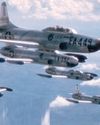
STARFIRES Over Korea
F-94 pilots tangle with MiGs
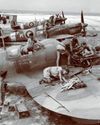
Training Mission
BY THE TIME THIS TRAINING SCENE WAS RECORDED in Canne, Italy, in July 1944, Allied Yugoslavian airmen had several years of experience working side by side with the RAF.
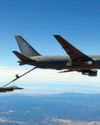
KC-46A PEGASUS
Next generation aerial refueler
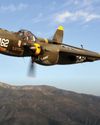
"SATAN'S ANGELS" ACE - Tales from a P-38 pilot in the South Pacific
\"AS A KID GROWING UP on the bow of my father's tugboat, hauling oil from Seattle to Alaska, I had a lot of time on my hands.
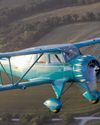
WACO YKC - Stunning and Ultra Rare Golden Age Cabin Flier
BETWEEN THE IMPLEMENTATION of the Air Commerce Act of 1926 and December 31, 1948, all U.S. registered flying machines sported an N-number, much as they do today, the \"N\" being an internationally recognized identifier for the United States. During that period, however, an additional letter-identifier followed the \"N.\" Depending on their category, they were registered in the NC (Commercial), NG (Glider), NL (Limited), NR (Restricted, usually meaning race airplanes), NS (State government), and, finally, NX (experimental).
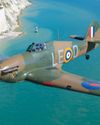
BADER'S HURRICANES
Double amputee fighter ace Douglas Bader and his Battle of Britain Hurricanes
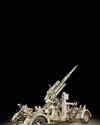
Scourge of the Allied Fighters
IT HAD TO BE THE MOST HELPLESS FEELING in the world: you're at 25,000 feet over Europe knowing that your primary function is to drop bombs-or flying escort for the bombers while being a slow-moving target for some of the world's finest shooters. However, you have John Browning's marvelous .50 caliber invention to give some degree of protection. Unfortunately, you're absolutely helpless against flak. Piloting and gunnery skills play no role in a game where sheer chance makes life and death decisions. For that reason, the Krupp 88 mm Flak 18/36/37 AA cannon could be considered WW II's ultimate stealth fighter. You never saw it coming.
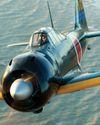
ZERO MYTH, MYSTERY, AND FACT
A test pilot compares the A6M5 Zero to U.S. fighters